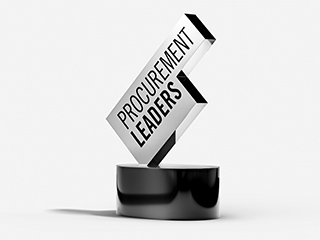Customer to Cash
Customer to Cash
3. Customer to Cash
Clariant continually optimizes planning, procurement, production, and delivery with a holistic and cross-functional approach. Operational Excellence balances supply and demand, resulting in improved product availability, reduced supplier cost, and lower risk. This results in shortened lead times and deliveries that are on-time and in-full, raising both customer satisfaction and Clariant’s profitability.
3.1. Advancing end-to-end supply chains and operational excellence
Clariant’s customers express continual interest in moving forward and connecting their supply chains. Thus, Clariant is building integrated end-to-end supply chains, enabled by digital dexterity, technology, and an agile mindset. The aim is to translate customer requirements into rigorous demand planning, facilitated by statistics, machine learning, and demand sensing. This ensures continuous interlinkage of the commercial with the operational value chain.
In 2019, Clariant implemented tactical sales and operations planning cycles under the leadership of profit and loss owners to ensure profitable and proactive balancing of demand and supply. The company further developed and implemented an end-to-end supply chain management dashboard using the Gartner Hierarchy of Supply Chain Metrics framework. The dashboard offers quick focus diagnostics while enabling deep dives for root cause analysis and solution definition, taking into account the delicate balance between service, cost, and net working capital. Clariant aims to further strengthen business planning to allow proactive monetized scenarios for business steering. The use of advanced analytics and tools in the organization will also help detect demand outliers and supply constraints in order to optimize network and logistics costs.
The Integrated Planning Landscape (IPL) and Inventory Health Checks optimized organization, capabilities, and IT tools and improved inventory performance throughout Clariant’s operations. The Manufacturing Execution System (MES), rolled out in 2017, is a powerful tool that provides a real-time view of production status and enables continuous improvement.
3.2. Converting data into seamless processes
Digitalization offers plenty of opportunities to enhance operations. For example, in 2019, Business Unit Catalysts set up data infrastructure to gather information from different sources such as the SAP warehouse, the supply chain, the quality system, and production sensors and machines. By recording, cleaning, extracting, and modeling data, as well as connecting it with other information such as financial data, throughput, yield, and energy efficiency can be increased. Furthermore, the conversion costs of individual elements may be quantified. This big data analytics approach will be rolled out company-wide in 2020.
3.3. Nurturing agility
Customers across all markets are becoming ever more agile and expect the same from Clariant. In the past, large volumes with long lead times were the norm, while today small volumes and short lead times dominate business. By focusing on systematic demand and supply planning and the technology required to anticipate, detect, and directly react to production bottlenecks, Clariant is able to significantly reduce lead times. Projects to improve the operational chain are always run with a customer approach and divided into weekly work packages. Periodic feedback from users in the different Business Units, for example, in controlling, procurement, and production functions, is gathered, resulting in process adaptations where necessary. Clariant’s efforts substantiate its reputation as a fast and reliable supplier.
3.4. Continuous cost saving and risk reduction in procurement
Clariant is embedded in an extensive global supply chain. In 2019, more than 6 800 vendors delivered raw materials worth CHF 2.6 billion to Clariant. Careful procurement is therefore vital in overall cost savings. In 2019, Clariant analyzed spend effectiveness in areas such as direct spend for chemicals, IT, site services and maintenance, and energy. The company identified a long-term savings potential of around CHF 135 million, of which CHF 50 million were already realized by 2019. Further, the company is developing the category strategies in alignment with the Business Units for direct spend.
In 2019, Clariant’s efforts to reduce supplier risks was recognized externally. The company’s integrative approach helps to select and manage suppliers meeting strict sustainability and risk expectations. Thus, Clariant received the World Procurement Award 2019 for the implementation of a holistic risk management process. Among other elements, the jury was impressed by Clariant having real-time information available to assess its supply chain. Read more in Digitalization
3.5. Sustainability supports operational efficiency
Sustainability topics are also gaining in importance for Clariant’s operations. Clariant has continually embraced sustainable production as a driver for cost savings not only by increasing yield and reducing emissions, but also to save energy. The Production System Yield, Energy, Environment (YEE) and the eWATCH™ program both support these efforts. Through YEE, production processes and units are analyzed in order to optimize energy use, while eWATCH™ creates opportunities for savings by analyzing energy consumption across Clariant’s entire operations. The environmental targets 2025 quantify Clariant’s ambition to reduce energy consumption, greenhouse gas emissions, waste production, and water use, and drive environmental protection and operational efficiency. Read more in Planet
3.6. Safe and healthy operations
Running a safe operational chain is not only a stipulation of a responsible employer; it also minimizes disruptions in production. Clariant’s ambitious health and safety target of zero accidents reflects both of these factors and is a top priority in operations. In 2018, »Safety Moments« – brief documents containing safety messages – were rolled out internally and used at the beginning of meetings to raise safety awareness. The lost time accident rate (LTAR) remained stable at 0.15 days lost per 200 000 hours of work in 2019. Read more in Human Capital
Care Chemicals, Connecting the supply chainThe value chain describes the series of steps in the production process, from raw materials through the various intermediate stages to the finished end product. View entire glossary
Net working capital is the difference between a company’s current assets and its current liabilities. View entire glossary
A substance that lowers the activation energy, thereby increasing the rate of a chemical reaction without being consumed by the reaction itself. View entire glossary
